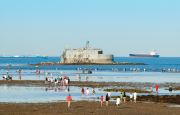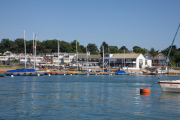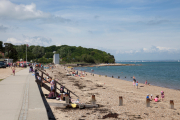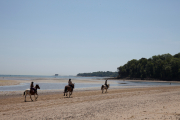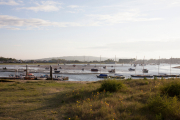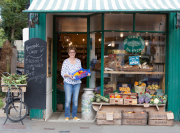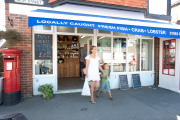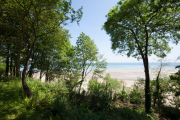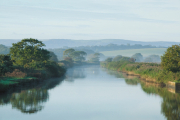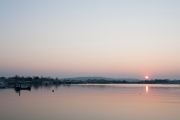The Bembridge area

Bembridge has a long and rich history. During the Middle Ages the harbour stretched back as far as the village of Brading, offering a deep and protected anchorage. Before this, during the Roman era, the water ran right through to Sandown, making Bembridge itself a separate island. However over the years silting has relentlessly filled the harbour with sand. The construction in the 19th century of a railway line connecting Bembridge to St Helens accelerated this. The foundations for the track reduced the daily flow of the tides across surrounding marshlands, which gradually silted up, creating today’s Bembridge Harbour. The harbour, home to two popular sailing clubs, is busy in the summer with small pleasure craft, fishing boats and the quirky houseboats that line its shore. Sailing boats, RIBs, jetskis, kayaks and paddle boards can be chartered from outlets on the harbour.
In the second half of the 19th century, after Queen Victoria built Osborne House as her summer residence, Bembridge became a fashionable resort. Its popularity increased in 1882 when the Royal Isle of Wight Golf Club was founded on the Duver, the open land across the harbour mouth from the Watch House. The club was frequented by royalty and celebrities, and many international players. It closed in 1961, since when the National Trust has managed the area as a nature reserve.
Bembridge is the most easterly village on the island. It has a small Co-op on the High Street, where you will also find the Farm Shop offering local produce and award-winning bread. In addition there are fishmonger’s, butcher’s and baker’s shops along with a Boots and lots of places to eat.
Bembridge has a long secluded coastline with wide, shallow beaches, perfect for bathing, beach-combing, crabbing and, when the tide is out, miles of beach to walk on. Walking east along the beach you will come across the Lifeboat Station and further along at Bembridge Ledge, is the Beach Hut Café serving excellent local produce. Many of the beaches are dog friendly.
Bembridge Windmill, found at the end of the High Street, is an iconic landmark and the only surviving windmill on the island. It was built c.1700 and still has the original machinery intact. From here there are glorious views across the island, which have provided inspiration for many artists including J.M.W Turner.
For more on the history of Bembridge, see https://bembridgeharbourtrust.org/local-history/.
Further Afield
The Island has a wide range of attractions, from Queen Victoria’s Renaissance-style Osborne House on its north coast to wild fossil-strewn beaches to the southwest. Activities include golf, mountain biking, go-karting, surfing, tree climbing, ten-pin bowling and paragliding.

